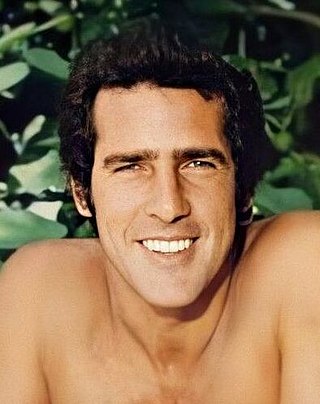
Andrés García García was a Dominican actor. He served as a scuba diving instructor in Acapulco. At the time of his death, he was one of the last surviving stars from the Golden Age of Mexican cinema.

Francisco Ibáñez Talavera was a Spanish comic book artist and writer.
Jesús López Pacheco was a novelist, translator, poet and professor of Spanish.

Manuel Vázquez Gallego, was a Spanish cartoonist. He was one of the most important artists of Editorial Bruguera.

Indian auxiliaries were those indigenous peoples of the Americas who allied with Spain and fought alongside the conquistadors during the Spanish colonization of the Americas. These auxiliaries acted as guides, translators and porters, and in these roles were also referred to as yanakuna, particularly during the Spanish conquest of the Inca Empire. The term was also used for formations composed of indigenous warriors which were used by the Spanish for reconnaissance and combat duties. Indian auxiliaries continued to be used by the Spanish to maintain control over their colonies in the Americas; frequently stationed on the frontier, they were often used to suppress anti-colonial revolts such as Arauco War.
Rompetechos is a Spanish comic character created by cartoonist Francisco Ibáñez in 1964, protagonist of the series of the same name. Rompetechos is a short and myopic man whose poor vision generates comical situations. Ibánez stated repeatedly that, among his creations, this was his favorite character and due to this he appeared frequently in other series by the author, notably Mortadelo y Filemón.
The Spanish Federation of Underwater Activities is the governing body in the field of Spanish aquatic sports. As of 2022, the federation has 895 registered clubs and 32,289 federated athlets.

Juan Arnau, Spanish philosopher and essayist, a specialist in Eastern philosophies and religions.
Events in the year 1924 in Spain.
Maria Pasqual i Alberich was a prolific and popular Spanish illustrator.

Edmundo Fernández Ripoll, better known as Edmond, is a Catalan comic book artist and illustrator, born in 1938 march in Barcelona. His most famous creation was Jan Europa.
Andoni Canela Urizar is a Spanish photographer who specializes in nature and environment photography.
Ediciones B is a Spanish publisher, which currently operates as a division of Penguin Random House. Ediciones B is headquartered in Madrid and Barcelona, Spain; with branches throughout Latin America. It was established in 1986, but has its origins in El Gato Negro (1910) and Editorial Bruguera (1940).

The following index is provided as an overview of and topical guide to underwater divers:

Benito Pocino, is a Spanish actor.
Martz Schmidt or Schmidt is the pseudonym of the Spanish comic author Gustavo Martínez Gómez. He is part of the second generation the Bruguera school alongside Figueras, Gin, Ibáñez, Nadal, Segura, Raf or Vázquez.
Miquel Bernet Toledano, better known by the pseudonym Jorge, was a Spanish comic artist. His most famous character is Doña Urraca.

Gregorio Prieto Muñoz was a Spanish painter associated with the Generation of '27.
Juan Simeón Vidarte Franco-Romero was a Spanish lawyer and socialist politician. He was deputy secretary general of the Spanish Socialist Workers' Party between 1932 and 1939, and secretary of the Congress of Deputies during the first legislature of the Second Spanish Republic (1931-1933). After the Spanish Civil War, he went into exile in Mexico.
This is a list of Spanish television related events from 1964.









